Stream Applications of Natural & Nature Based Features (NNBF) in the Arid SW
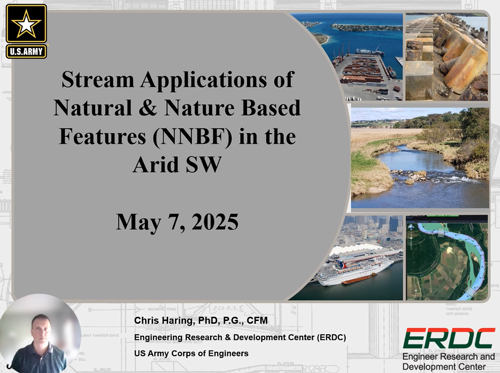
This presentation was delivered by Dr. Christopher Haring, Research Physical Scientist and Lead for the Fluvial Chapters of the Engineering With Nature (EWN) initiative at the U.S. Army Corps of Engineers’ Research and Development Center, Coastal and Hydraulics Laboratory. It was part of the May 2025 workshop titled “EWN Natural and Nature-Based Features Playbook for […]
Managed Aquifer Recharge: Physical and Social Considerations for Siting
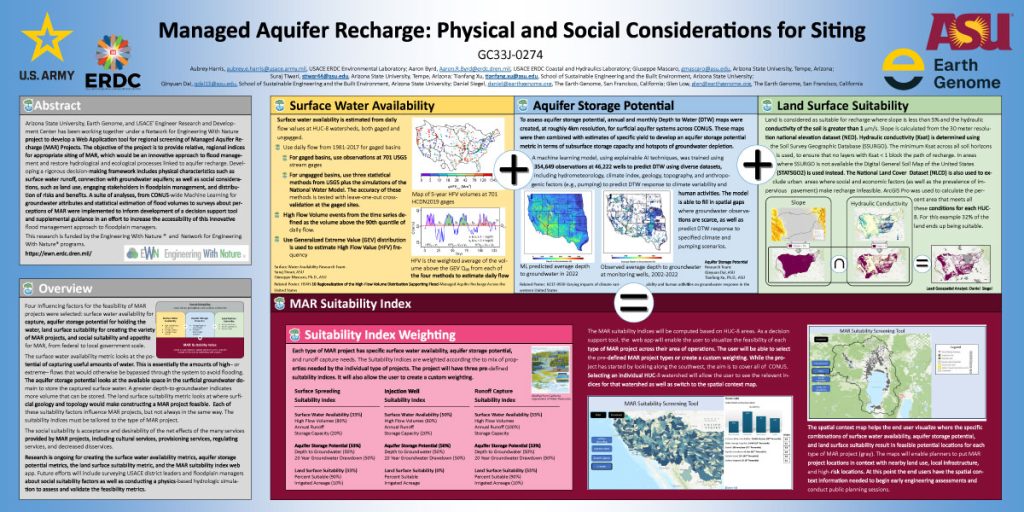
Arizona State University, Earth Genome, and USACE’ Engineer Research and Development Center has been working together under a Network for Engineering With Nature project to develop a Web Application tool for regional screening of Managed Aquifer Re-charge (MAR) Projects. The objective of the project is to provide relative, regional indices for appropriate siting of MAR, […]
Beneficial Use of Dredged Sediment by 3D Printing Into Nature-Inspired Infrastructure
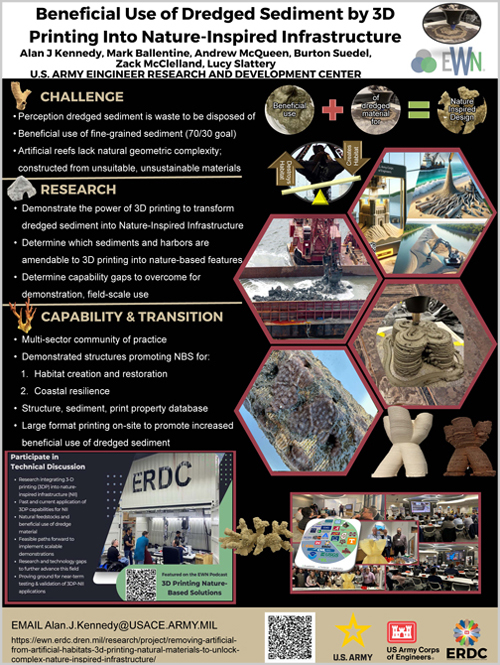
This poster highlights innovative EWN research utilizing 3D printing technology, exploring the use of dredged sediment as feedstock for 3D printing to create nature-based solutions (NBS). This work aligns with the goal of beneficially using 70% of dredged material by 2030, demonstrating the potential of 3D printing to transform dredged sediment into Nature-Inspired Infrastructure. The […]
Preliminary Investigations into the Use of Dredge Material as a Substrate for the Growth of Benthic Organisms
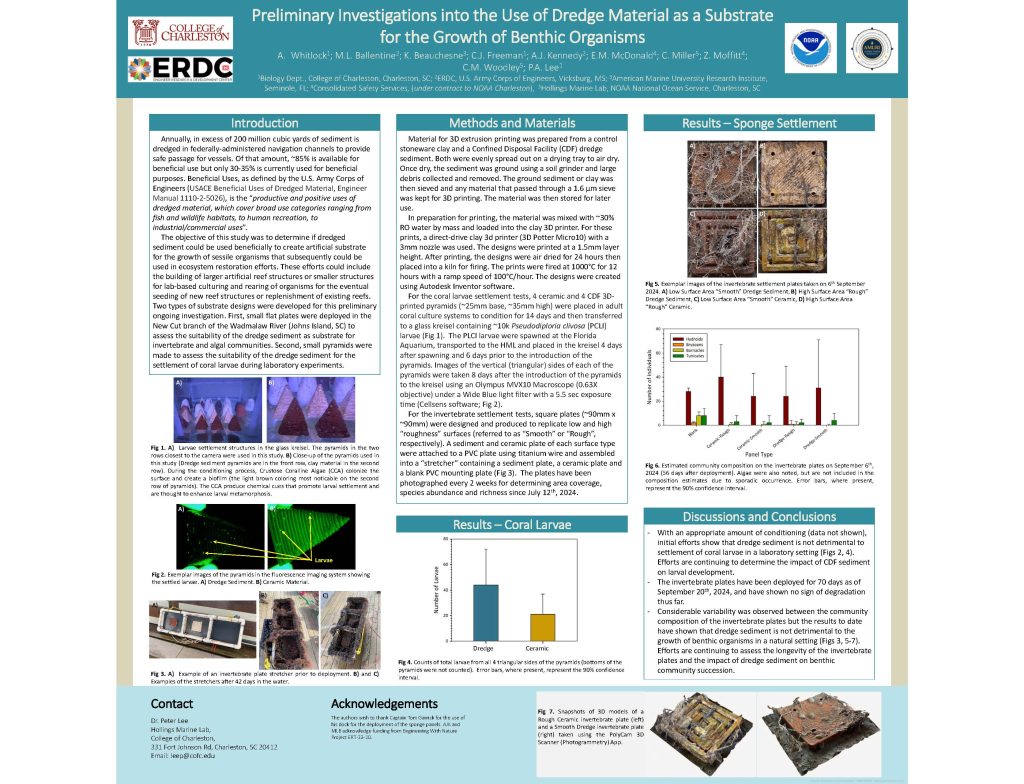
Presented at Hollings Marine Lab (HML) Science Day at the Fort Johnson Marine Science Complex in Charleston, South Carolina, on October 3, 2024. HML Science Day is a day-long symposium to showcase research activities at the HML and foster further collaborative discussions amongst researchers. Annually, in excess of 200 million cubic yards of sediment is […]
Site Characterization of a Restored Coastal Dune and Beach

Dr. Brian Harris (ERDC-CHL) delivered an insightful presentation titled “Site Characterization of a Restored Coastal Dune and Beach” at the 7th International Conference on Geotechnical and Geophysical Site Characterization (ISC) in Barcelona, Spain, from June 18-21, 2024. In collaboration with researchers from the United States, Australia, Canada, and Spain, Dr. Harris discussed the best geotechnical […]
Wildfire Recovery Using Engineering With Nature Principles
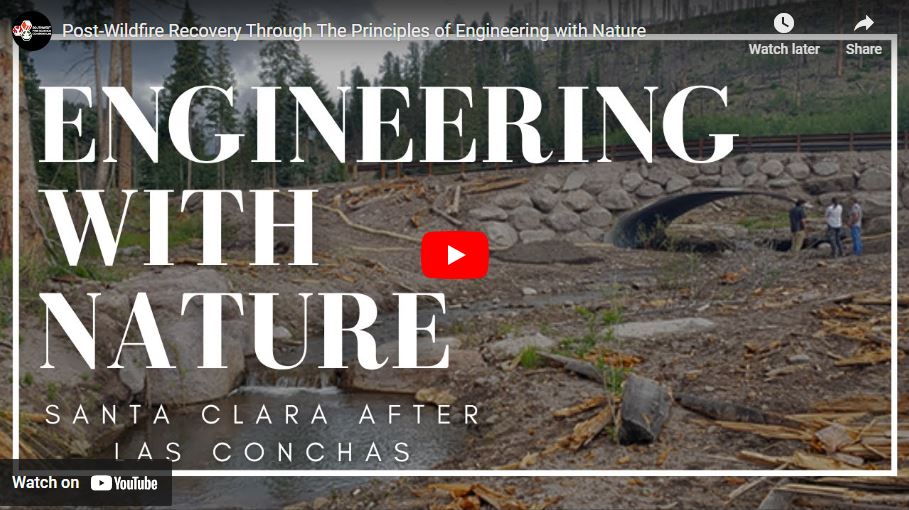
Engineering With Nature supports wildfire recovery efforts at the Santa Clara Pueblo in New Mexico, emphasizing the development of protocols and design information for Natural and Nature-based Features (NNBF). These efforts, driven by requests from US Army Corps of Engineers (USACE) Districts and project sponsors, aim to create more sustainable and resilient designs, thereby preparing […]
Simulating future changes in coastal tundra retreat along the Alaskan Chukchi Sea

Rapid change in the Arctic is driving considerable coastal land loss and flooding hazards. These coastal hazards put people and infrastructure at risk. Quantitative tools designed for cold region settings, including ice and thermal processes, are necessary for constraining future risk and designing suitable adaptation options. Ongoing work at the US Army Engineer Research and […]
Assessing Opportunities for Natural Infrastructure Planning: Accounting for Human Well-Being
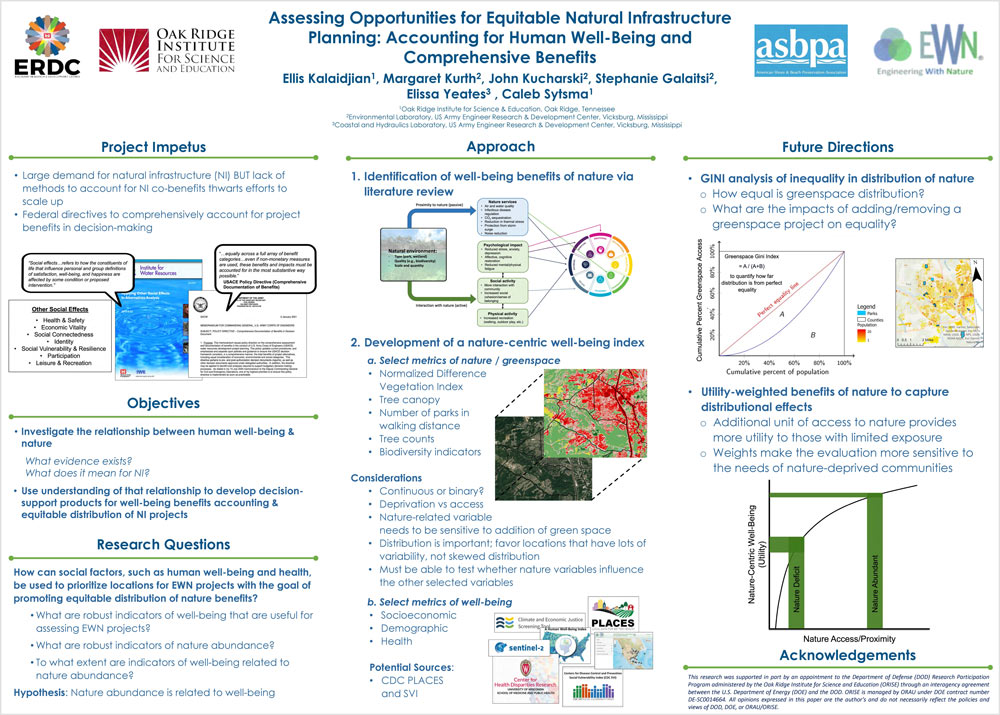
Presented by Ellis Kalaidjian [Oak Ridge Institute for Science & Education (ORISE), Oak Ridge, Tennessee], Margaret Kurth [Environmental Laboratory (EL), US Army Engineer Research & Development Center (ERDC)], John Kucharski [EL-ERDC], Stephanie Galaitsi [EL-ERDC], Elissa Yeates [Coastal and Hydraulics Laboratory, ERDC], and Caleb Sytsma [ORISE]
Environmental Applications of Additive Manufacturing Featuring Nature-Inspired Design using Natural Materials
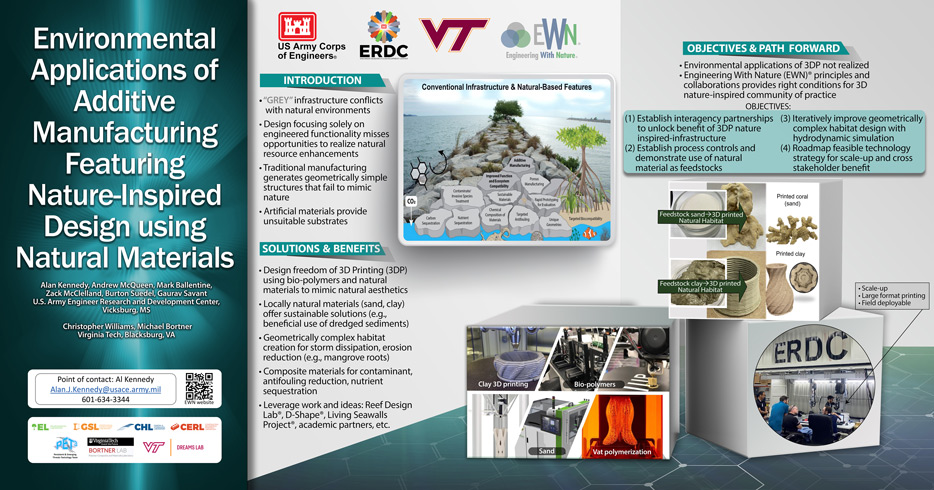
Global waterborne “grey” infrastructure interfaces with the natural environment; yet, design often solely focuses on engineering functionality and misses opportunities to realize natural resource enhancements to achieve additional economic, environmental, and social benefits. Traditional manufacturing often generates geometrically simple structures that do not mimic natural geometries nor are intended to offer multifunctional benefits. However, the […]
Integrating Water Resources Infrastructure with Upland Management to Advance Nature-Based Solutions for Water Quantity and Quality

Dr. Todd Steissberg (ERDC-EL) delivered a presentation titled “Integrating Water Resources Infrastructure with Upland Management to Advance Nature-Based Solutions for Water Quantity and Quality” at the International Soil and Water Assessment Tool (SWAT) Conference, June 28, 2023. This presentation gave an overview of the project, the goals of the EWN program, the watershed-scale problems that […]

